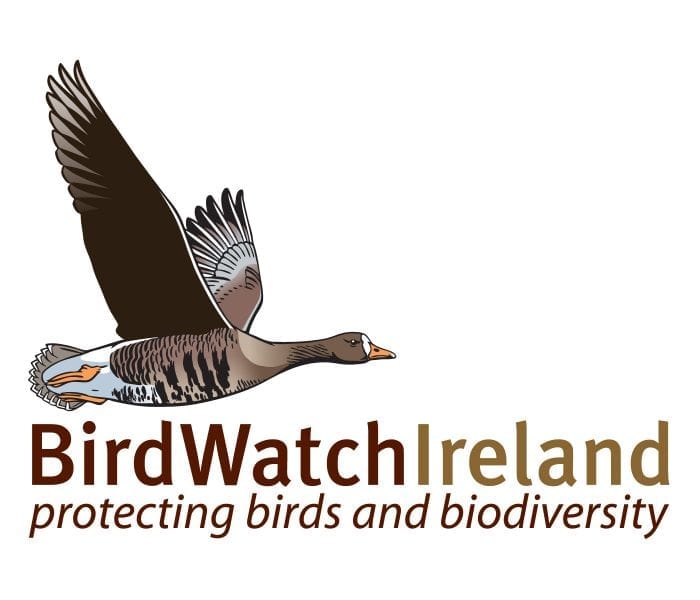Lucy Barrett has joined BirdWatch Ireland this season to work as the Dalkey Tern Warden, having just completed her undergraduate degree in Zoology in UCD. Lucy has been working away, keeping an eye on how the season is unfolding for the terns on the islands…
The Dalkey island fieldwork season began with a bang with a visit to the islands on the 24th of May to search for and record tern nests. First up – Lamb Island! During this visit we scrambled at low tide to near-by Lamb Island, where we found one Arctic Tern nest. A whopping (in Lamb Island terms) thirty-three Herring Gull pairs and 1 Great Black-backed Gull pair were also recorded nesting on Lamb Island that day, as well as one Oystercatcher.
 Herring Gull nest. Photo taken under NPWS licence. (Tara Adcock).
Herring Gull nest. Photo taken under NPWS licence. (Tara Adcock).
 Herring Gull nest. Photo taken under NPWS licence. (Tara Adcock).
Herring Gull nest. Photo taken under NPWS licence. (Tara Adcock).
The trip to Lamb Island was slightly hairy! Gulls are excellent parents, but also very protective of their eggs and young, as they lay only one clutch per year, and can become aggressive if you go near them. To prevent them attacking us, we had to wave our hands over our heads to put them off and keep an eye on the direction the gulls were flying to make sure they were not flying at us!
Once the tern and gull nest censuses on Lamb Island were finished, we made our way back to Dalkey Island unscathed. Dalkey Island was looking better in terms of terns, with 44 Arctic Tern pairs nesting by the pier, bringing our colony total up to 45 pairs. Each tern nest on both islands was individually marked with a unique code, and the number of eggs in each nest logged. This is done so that we can keep track of the progress of each individual nest over the season.
 Arctic Tern nest. Photo taken under NPWS licence. (Tara Adcock).
Arctic Tern nest. Photo taken under NPWS licence. (Tara Adcock).
As terns are a ground nesting species, and their eggs are camouflaged, there is a real risk of them being accidentally trod on by members of the public visiting Dalkey Island. To prevent this, we erected fencing around the nesting terns, and put up signage which DLR County Council had commissioned, informing the public of the presence of ground nesting terns within the fenced off area. Lamb Island is closed by DLR County Council to the public during the summer months and so disturbance is rarely an issue on this island.
 Arctic Tern chick. One of three which hatched this season. Photo taken under NPWS licence. (Lucy Barrett).
Arctic Tern chick. One of three which hatched this season. Photo taken under NPWS licence. (Lucy Barrett).
In addition to human disturbance, predation has long been an issue on the Dalkey islands. Avian predation is a completely natural phenomena and in a balanced ecosystem, with multiple nesting habitats for Arctic Terns to choose from, would not be of great consequence. Unfortunately, our tern populations are in trouble on several fronts, one of which is the availability of safe nesting habitat. As such their populations are concentrated at a very small number of sites, leaving the overall population very vulnerable to predation. For instance, on the Irish eastern and south-eastern seaboard, the Arctic Tern population is concentrated in just 4 key sites, all of which have suffered from predation over their recent history.
 Arctic Tern ‘MV’, originally ringed as an adult on ‘The Skerries’ UK, it bred on Dalkey Island in 2020 and 2022. Photo taken under NPWS licence. (Jan Rod).
Arctic Tern ‘MV’, originally ringed as an adult on ‘The Skerries’ UK, it bred on Dalkey Island in 2020 and 2022. Photo taken under NPWS licence. (Jan Rod).
To try and combat avian predation (principally gull predation with some potential corvid predation) on the Dalkey islands, we deployed specially designed nest boxes across both Lamb Island and Dalkey Island. These nest boxes were commissioned by DLR County Council, with advice from BWI. The nest boxes were based on designs from Coquet Island and BirdWatch Ireland and are designed to prevent species such as corvids or gulls from accessing the tern chicks.
 Tern nest box/ chick shelter, based on designs from Coquet Island in the UK. (Lucy Barrett).
Tern nest box/ chick shelter, based on designs from Coquet Island in the UK. (Lucy Barrett).
Arctic Terns, unlike their cousins Roseate Terns, do not nest in nest boxes, preferring to nest in the open with ideally a 360 view so that they can attack any oncoming predators and drive them away. Their chicks, however, will shelter in these boxes, protecting them from the weather and hopefully, avian predation.
While the first visit to the islands was extremely positive, the outlook during the next visit was less hopeful. Unfortunately, between visits the Dalkey Island sub-colony experienced heavy predation, with nearly all the nests predated. Based on trail camera footage, it is now known that Brown Rats have re-colonised the Dalkey islands and are thought to be the principal cause of the predation this season.
 Brown Rat captured on trail camera footage in June 2023.
Brown Rat captured on trail camera footage in June 2023.
Between 2018 and 2020, BWI with funding from the EU LIFE Roseate Tern Recovery Project and DLR County Council, carried out rat eradication work across the Dalkey islands. Following this work, the number of tern chicks surviving to leave the islands (fledging) initially bounced back, although avian predation and poor weather beleaguered the tern colony in more recent years.
 Arctic Tern fledgling. Photo taken under NPWS licence. (Jan Rod).
Arctic Tern fledgling. Photo taken under NPWS licence. (Jan Rod).
Following Covid, BWI also completed monitoring for rats on behalf of DLR on the islands in Feb 2022. Continued monitoring of the colony during the breeding season using trail cameras followed by more monitoring the following winter 2022/23 was recommended. DLR County Council commissioned a third party to undertake the recommendations of BWI and further biosecurity work by specialists was completed during the winter of 2022/ 23. This work included monitoring stations, followed up with searches of trace evidence of rodents along with thermal camera work. This concluded little evidence of rats on the island (similar to the conclusions of 2021/2022). This work finished just before the bird breeding season in March 2023. This conclusion was also found by a second specialist who was also working throughout the winter months on Dalkey Island.
The Dalkey islands lie approximately 300m from the mainland at their closest point. Due to their proximity to the mainland and the fact that Brown Rats can swim well over a kilometre in open water, there is always the potential for rats to swim across to the island.
While ground nesting seabirds such as terns can drive away much avian predation, they are not equipped to drive away mammalian predators. Terns have evolved to nest on islands and cliff faces, habitats which were traditionally free of mammalian predators. As such their defences are aerial defences, designed to drive away the likes of gulls. When predators, such as rats, are attacking from the ground, it is much more difficult for terns to drive them away, and it can lead to complete colony failures such as we have seen this season on the Dalkey islands.
The Dalkey tern colony limped on for a time, but unfortunately by the 21st June, the tern nests had all been predated and the colony was deserted. We’re hopeful that those terns which left the colony earlier in the season, may have re-nested elsewhere this season, and still had time to raise their young.
 Caching of eggs found in late May on Dalkey Island. This behaviour is indicative of mammalian predation. Photo taken under NPWS licence. (Tara Adcock).
Caching of eggs found in late May on Dalkey Island. This behaviour is indicative of mammalian predation. Photo taken under NPWS licence. (Tara Adcock).
Thankfully, we ringed five adult Arctic Terns this season with the help of Jan Rod of the Irish Midlands Ringing Group, and Jon Willans who is undertaking a PhD on the islands studying gull movements.
 Adult Arctic Terns colour ringed this season. Photo taken under NPWS licence. (Jon Willans).
Adult Arctic Terns colour ringed this season. Photo taken under NPWS licence. (Jon Willans).
If you work in an Arctic Tern colony, be sure to keep your eyes peeled for these birds – they have a black ring with a two letter/ number inscription! Or you may see them roosting at beaches or other islands. If so, contact colourrings@birdwatchireland.ie and let us know the code on the ring, the location, colour of the ring and the species.
 Colour ringed Arctic Tern originally ringed as a chick on the Dalkey islands in 2017. Photo taken under NPWS licence. (Jan Rod).
Colour ringed Arctic Tern originally ringed as a chick on the Dalkey islands in 2017. Photo taken under NPWS licence. (Jan Rod).
This work is a partnership between BirdWatch Ireland and Dún Laoghaire-Rathdown County Council.

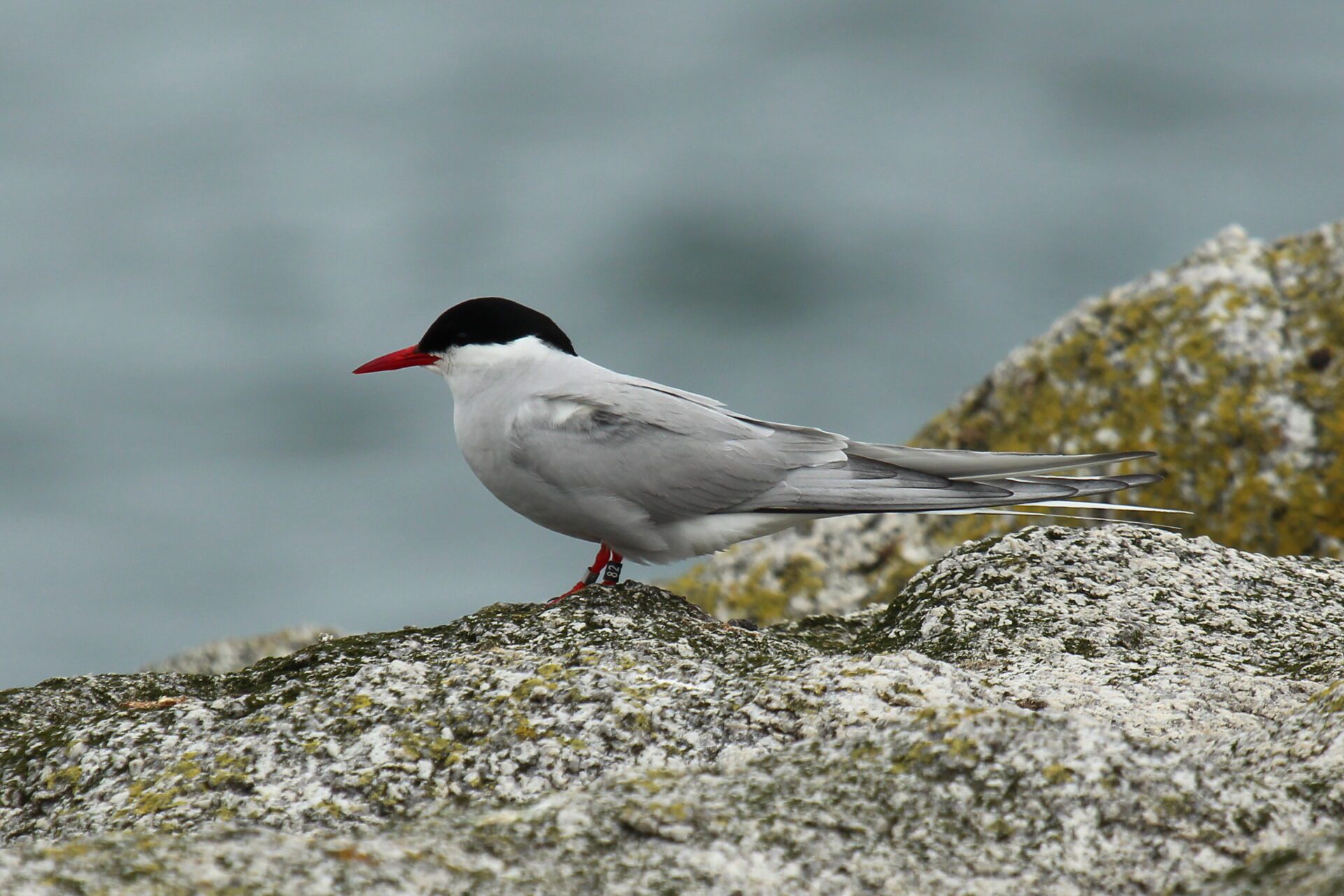
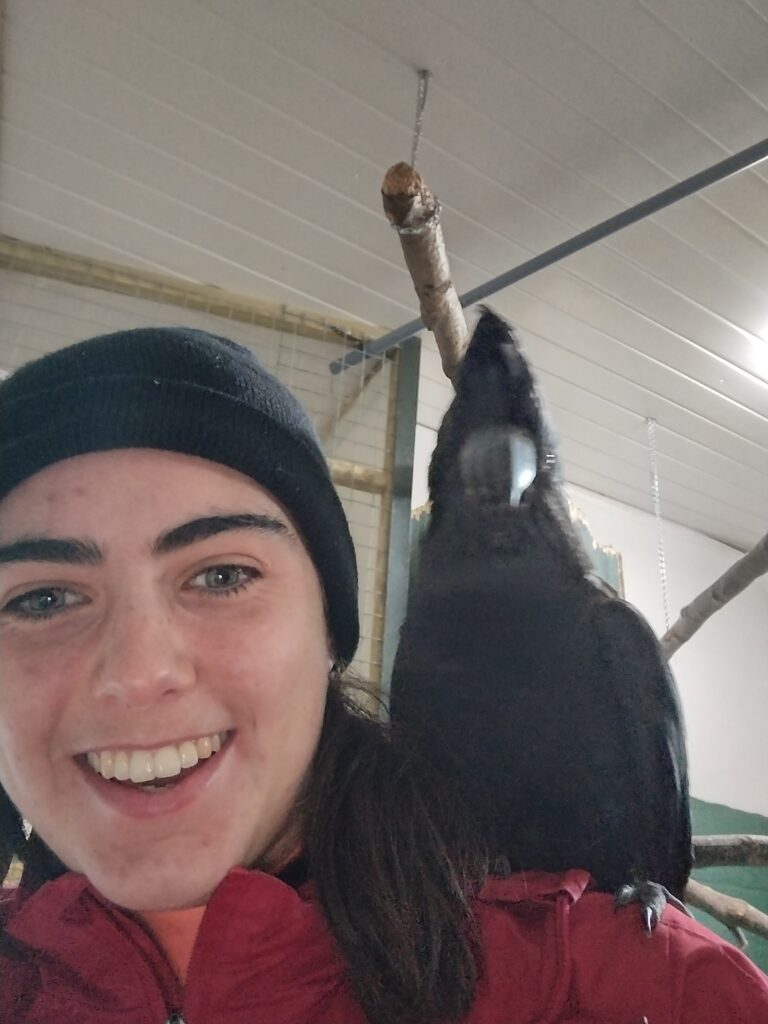
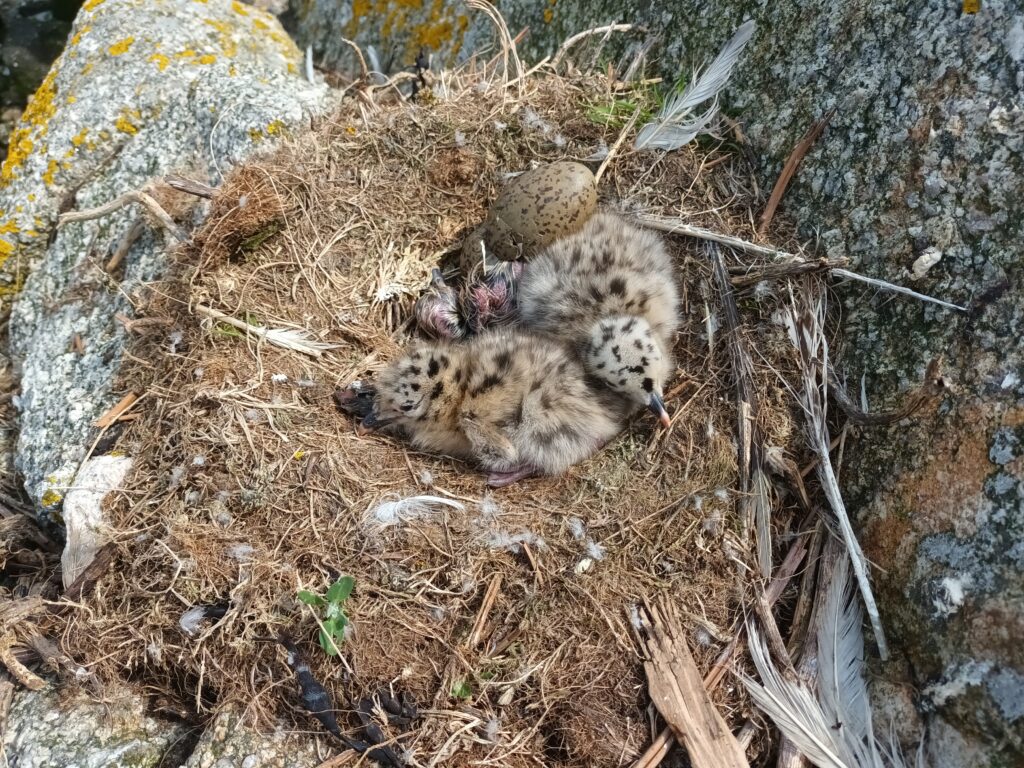 Herring Gull nest. Photo taken under NPWS licence. (Tara Adcock).
Herring Gull nest. Photo taken under NPWS licence. (Tara Adcock).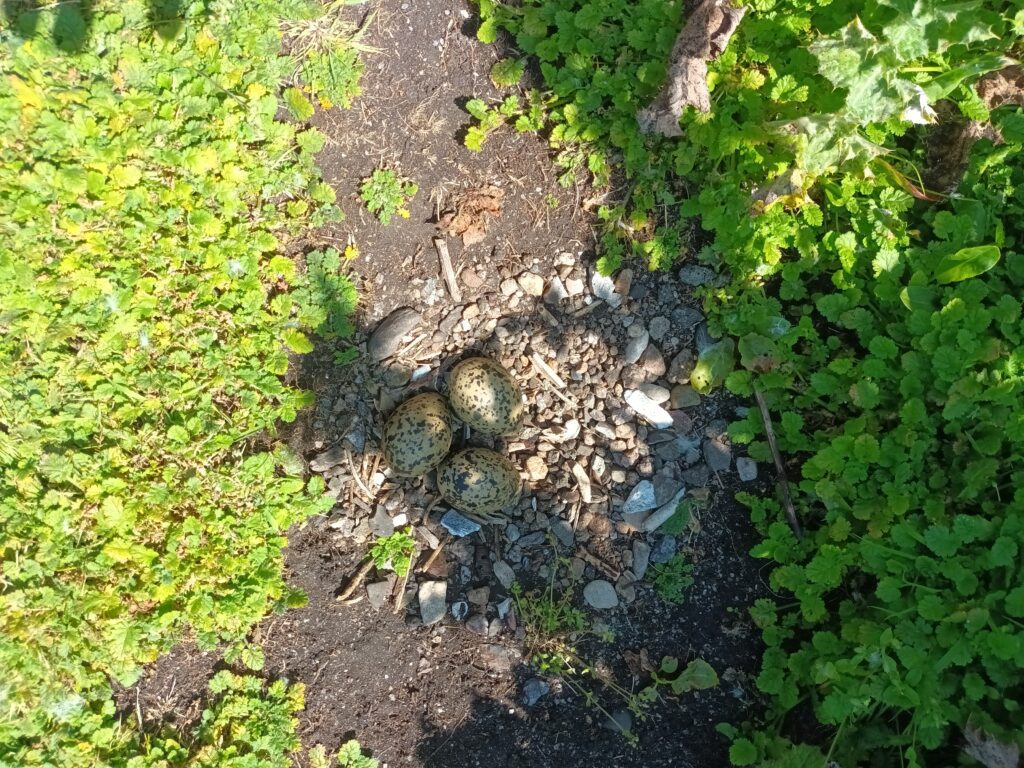 Herring Gull nest. Photo taken under NPWS licence. (Tara Adcock).
Herring Gull nest. Photo taken under NPWS licence. (Tara Adcock).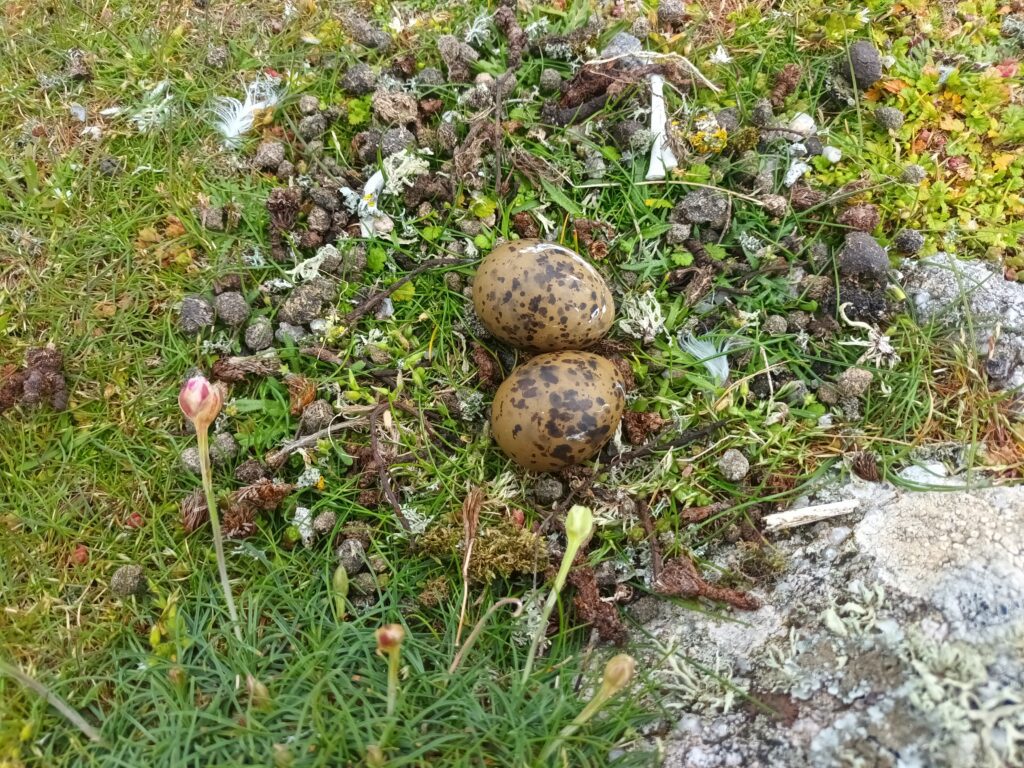 Arctic Tern nest. Photo taken under NPWS licence. (Tara Adcock).
Arctic Tern nest. Photo taken under NPWS licence. (Tara Adcock).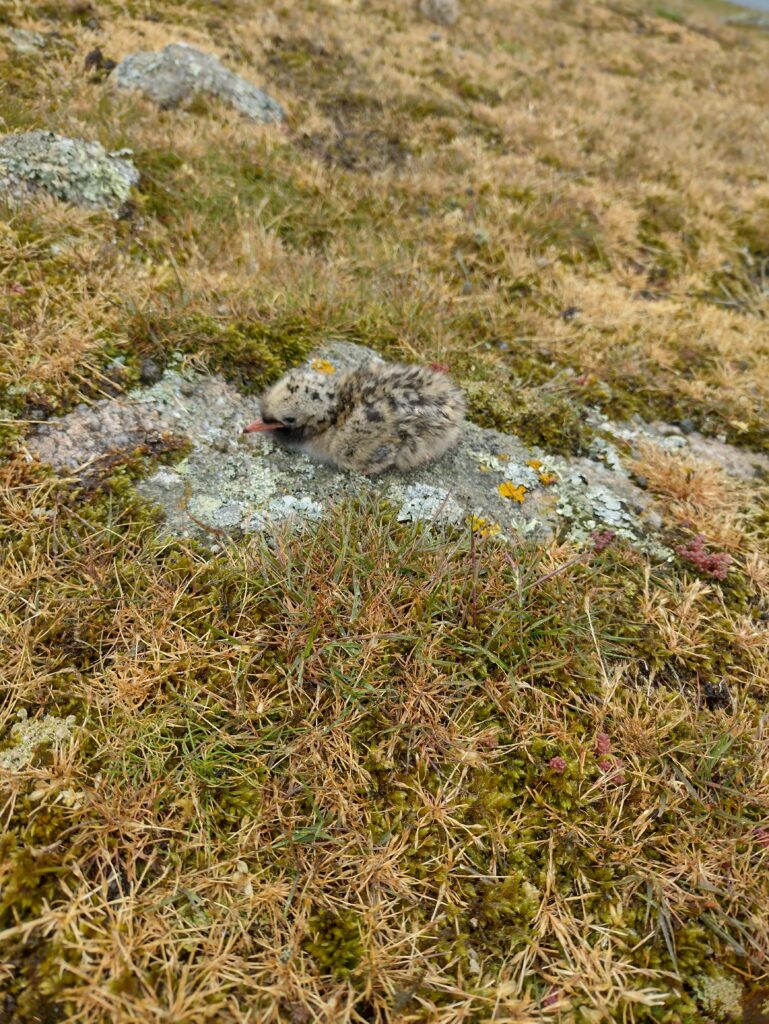 Arctic Tern chick. One of three which hatched this season. Photo taken under NPWS licence. (Lucy Barrett).
Arctic Tern chick. One of three which hatched this season. Photo taken under NPWS licence. (Lucy Barrett).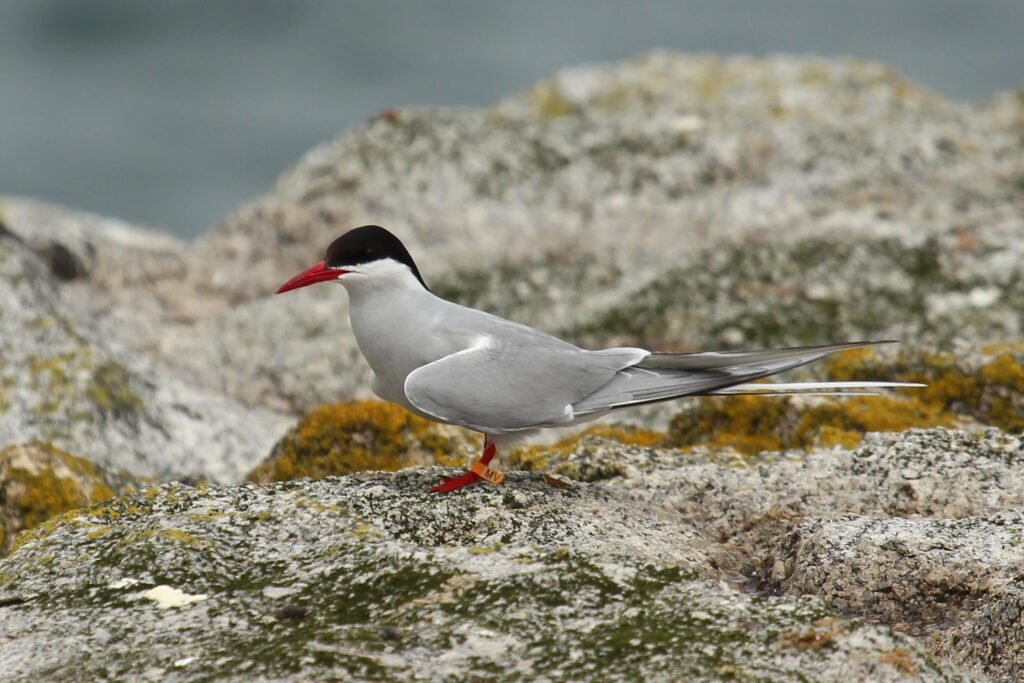 Arctic Tern ‘MV’, originally ringed as an adult on ‘The Skerries’ UK, it bred on Dalkey Island in 2020 and 2022. Photo taken under NPWS licence. (Jan Rod).
Arctic Tern ‘MV’, originally ringed as an adult on ‘The Skerries’ UK, it bred on Dalkey Island in 2020 and 2022. Photo taken under NPWS licence. (Jan Rod).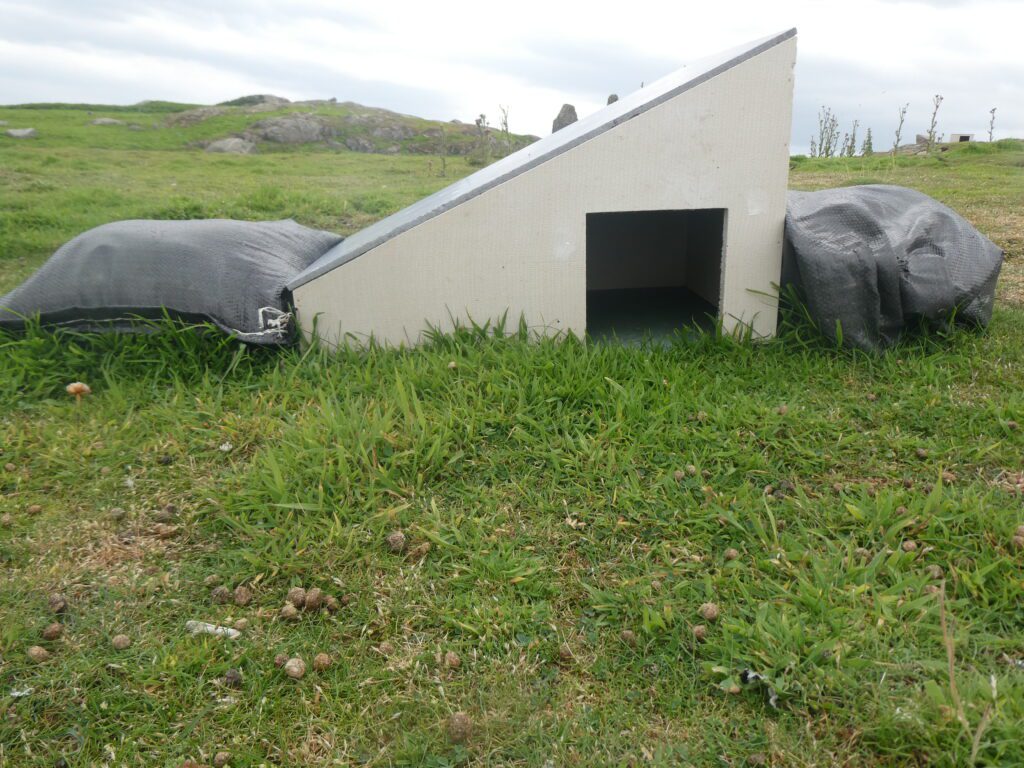 Tern nest box/ chick shelter, based on designs from Coquet Island in the UK. (Lucy Barrett).
Tern nest box/ chick shelter, based on designs from Coquet Island in the UK. (Lucy Barrett).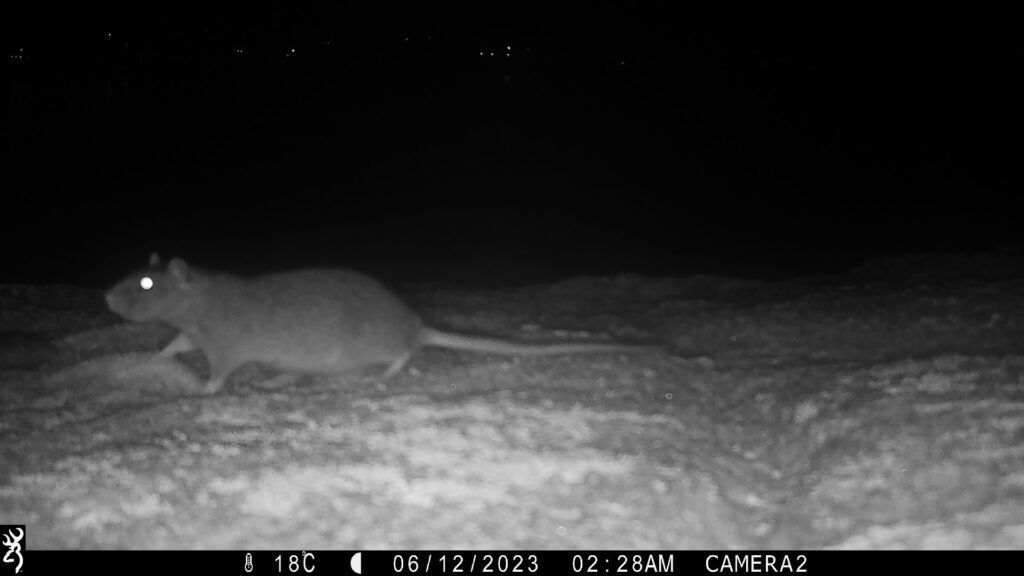 Brown Rat captured on trail camera footage in June 2023.
Brown Rat captured on trail camera footage in June 2023.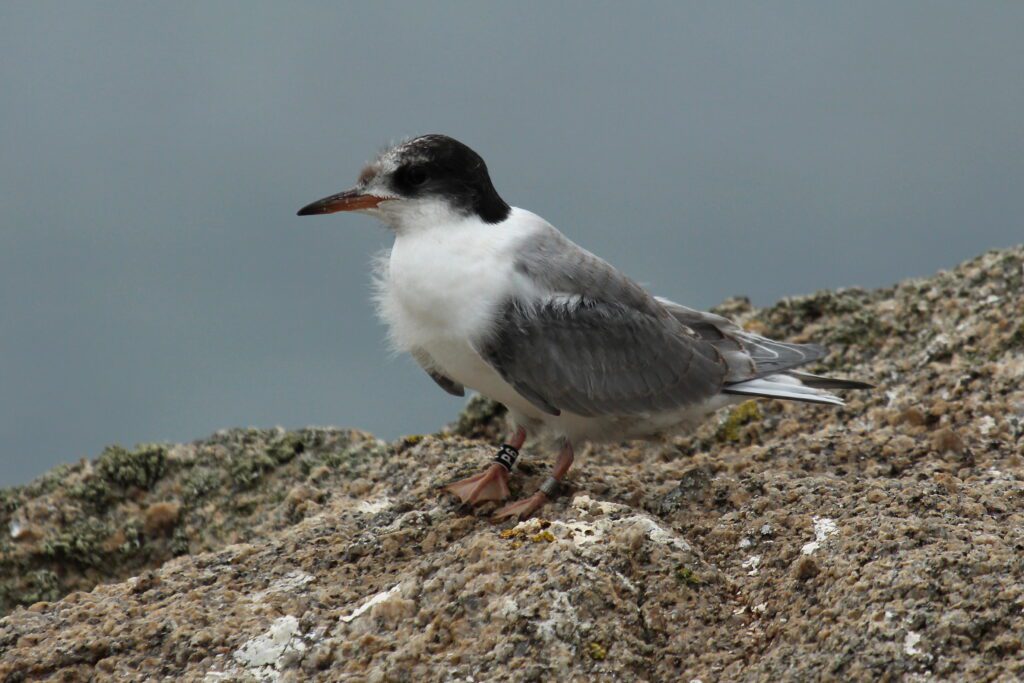 Arctic Tern fledgling. Photo taken under NPWS licence. (Jan Rod).
Arctic Tern fledgling. Photo taken under NPWS licence. (Jan Rod).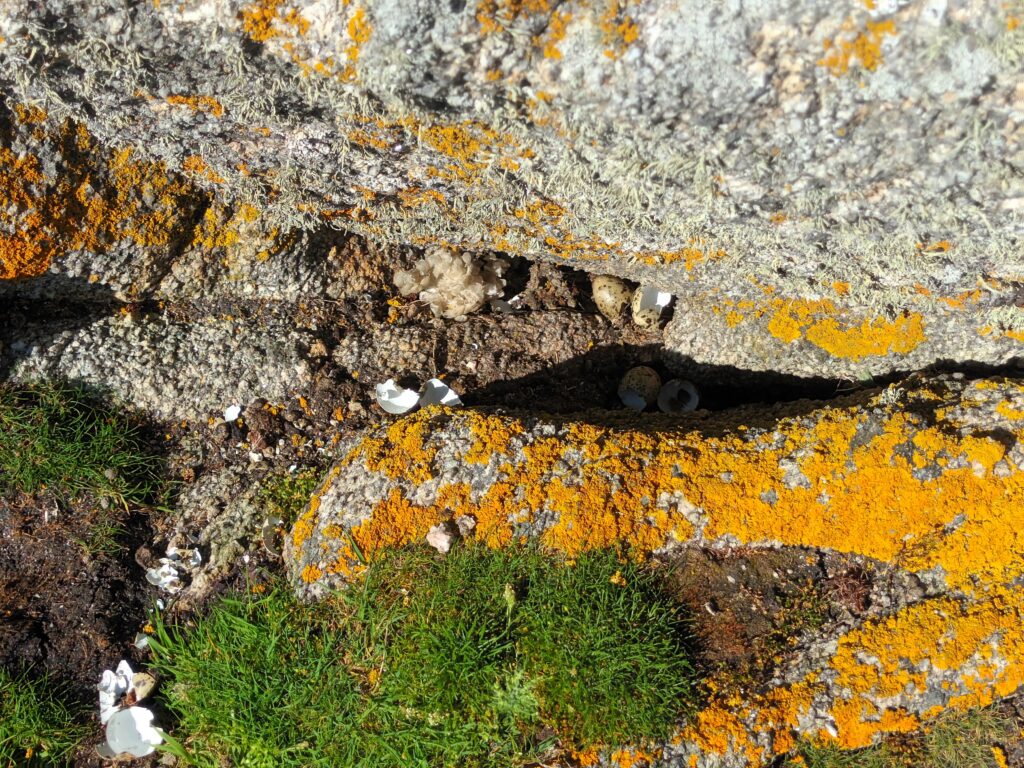 Caching of eggs found in late May on Dalkey Island. This behaviour is indicative of mammalian predation. Photo taken under NPWS licence. (Tara Adcock).
Caching of eggs found in late May on Dalkey Island. This behaviour is indicative of mammalian predation. Photo taken under NPWS licence. (Tara Adcock).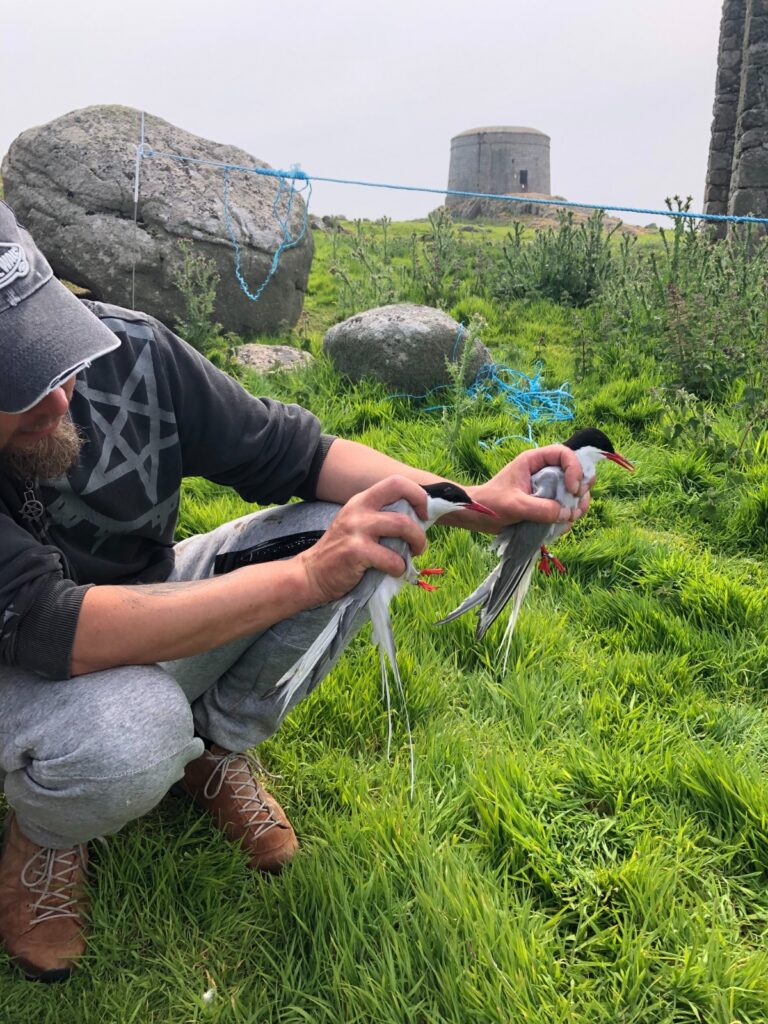 Adult Arctic Terns colour ringed this season. Photo taken under NPWS licence. (Jon Willans).
Adult Arctic Terns colour ringed this season. Photo taken under NPWS licence. (Jon Willans).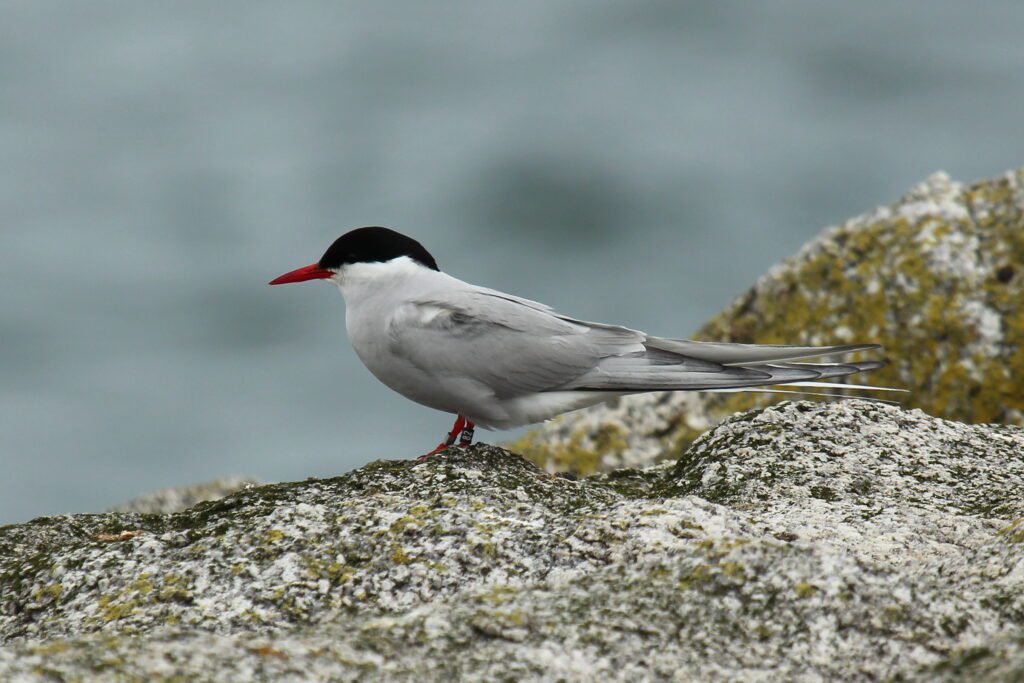 Colour ringed Arctic Tern originally ringed as a chick on the Dalkey islands in 2017. Photo taken under NPWS licence. (Jan Rod).
Colour ringed Arctic Tern originally ringed as a chick on the Dalkey islands in 2017. Photo taken under NPWS licence. (Jan Rod).